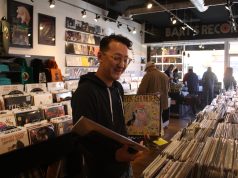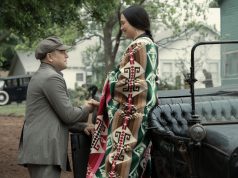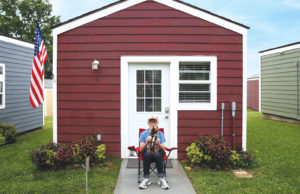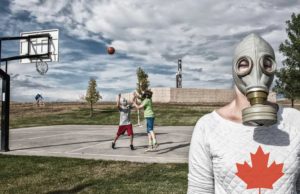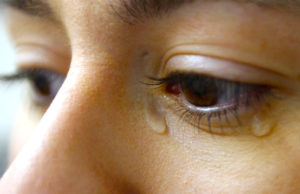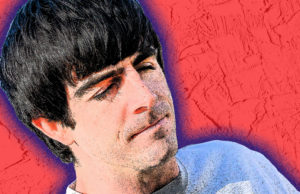
In space, no one can hear you scream — and you can’t
reload film into a large-format camera. Given that limitation, when the
crew of the Space Shuttle Atlantis blasted off 10 months ago to
rendezvous with the Hubble Space Telescope for repairs, they had to be
conscientious about using the 575-pound
Even though housing a mile’s length of film, the
camera could shoot only about 81/2 minutes of footage before running
out, so every moment captured on film had to be planned out and timed
to the second. The result of that mission to the space-based
observatory 350 miles above Earth is the new
The 43-minute film narrated by
train in a pool that mimics the conditions in outer space — the flight,
the spacewalk made by the crew for the repairs on the telescope — as
well as 3-D excursions through the vibrant images the Hubble has
captured over the years from various solar systems and galaxies.
“
“The treasure-trove of pictures that Hubble has sent
back . . . kind of made me crazy,” Myers says. “If you recall, they
were going to torpedo Hubble out of the sky after the
accident in 2003. Once the final service of the Hubble was reinstated,
I went straight to NASA. I said we need to show people what an amazing
instrument it really is. The website is fantastic, but we can also
portray it in a mind-blowing way in
Eight months before the flight, Myers and her crew
began instruction on the large-format camera with the astronauts. For
this mission, pilot
director of photography on the flight. “The camera is operated by a
laptop, a regular PC that has software in it. You can see what the
camera is shooting,” she adds.
To pinpoint the moments Myers wanted Johnson to capture on the
camera, they spent a lot of time at the Johnson Space Center training
pool. “We would be in on those training sessions themselves,” Myers
says. “We had little video cameras on during the pool runs so we could
pick out moments that were desirable to have and collaborate on that
list with the crew.”
Besides the spacewalks, crucial shots included the berthing and unberthing of the shuttle from Hubble.
Mission specialist
who was a veteran of the STS-109 flight to Hubble in 2002 and performed
two spacewalks on this mission, says all of the crew had to learn to
use the
camera. “Everyone kind of helps,” he says, explaining that they would
give Johnson an estimate of how long certain tasks would take. “He was
turning the camera on and off when I was out in the payload bay. But we
would help him through the flight. A minute of that film is pretty
precious.”
Particularly given the unique challenges they faced
in space. Because Atlantis would experience a sunrise or sunset every
45 minutes, the lighting could go awry. And then there were problems
when the astronauts tried to loosen screws and open a stuck panel on
the telescope.
“We were also told not to kick it while we were out spacewalking when we got near it,” recalls Massimino.
The astronauts are also trained how to work
high-definition cameras and digital still cameras. “You want to
document certain things,” Massimino says. “We wanted to take video and
pictures of the external tank on the shuttle to see if anything had
come off of it,” he says. “That is what caused the problem with
“It was really important for the mission to take
lots of pictures of the Hubble to see how it was. Then the fun part of
filming is for our own home movies, memories and presentations. I
wanted to try and capture the personalities of my crew mates. That is
why we did all of these interviews with each other. We also took
thousands of photos — we do that for every mission.”
———
(c) 2010, Los Angeles Times.
Visit the Los Angeles Times on the Internet at http://www.latimes.com/
Distributed by McClatchy-Tribune Information Services.


